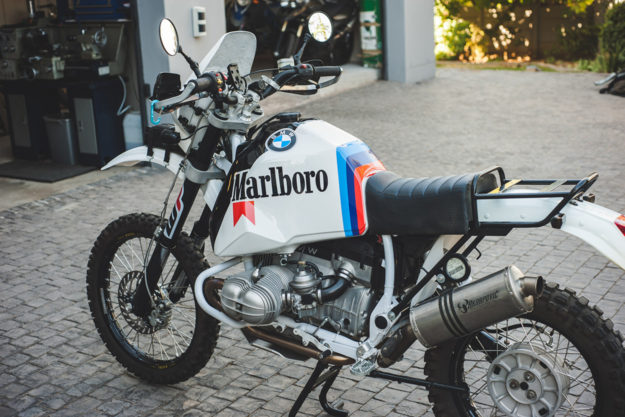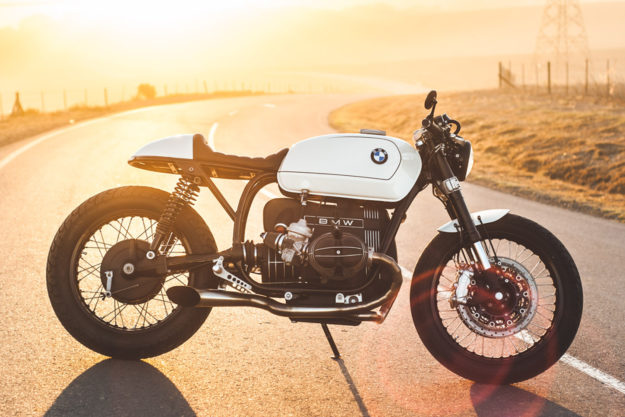
When your garage is packed with eleven BMW motorcycles spanning seven decades—and you have no car—it’s safe to say that your hobby has morphed into an obsession. So what do you do when simply collecting bikes isn’t enough? That’s easy: you start customizing them.
Meet Mark Johnston—a trained mechanical engineer who now works as a computer security specialist in Cape Town, South Africa. And this Mark’s first custom project: one of the most meticulous airhead builds we’ve ever seen.

Mark’s garage includes a 1952 R67/2, a kitted R80G/S and even an HP2, but it was his 1980 R100RT that went under the knife. “I like all BMWs,” he says, “but the RT is the lowest on the list, so didn’t feel too bad chopping it up.”
“I bought the bike locally—she was running, but had seen better days for sure. The year of the bike was important, as the older models have a nice big aluminum air box, which I wanted to use to house the battery.”
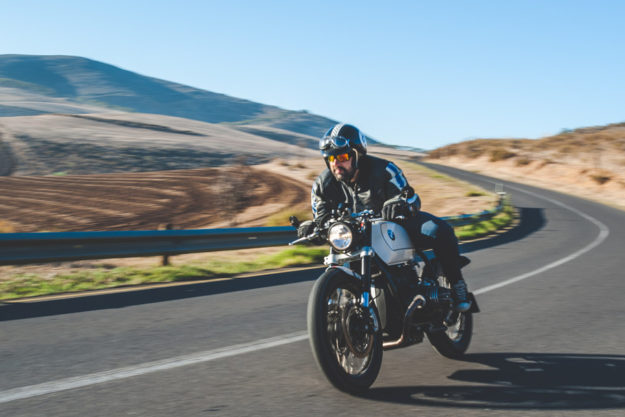
Having spent his younger days on superbikes, the idea of a cafe racer really appealed to Mark. “I wanted to take something old and bring it into the modern era,” he explains, “but still keep its soul—the lovely, air-cooled boxer motor.”
It’s a remarkable effort for a first build, and goes well beyond a cosmetic job. To update the front end, Mark opted for a set of Suzuki GSX-R 600 upside-down forks, matched to a custom-machined top triple tree with an integrated speedo mount.
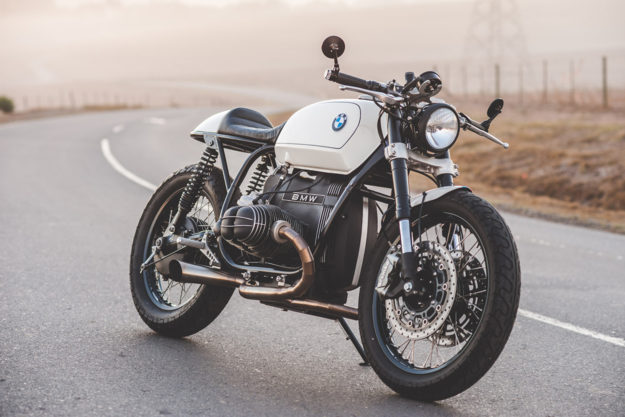
The GSX-R also donated its twin Brembo brake calipers, with a custom fluid reservoir completing the setup. The wheels are period-correct BMW spoked units—a rare find in South Africa.
The front’s capped off with a small headlight on a hand-made bracket, and a hand-rolled front fender. Mark went to great lengths to finish off smaller parts—like the fender braces—exactly as he wanted.
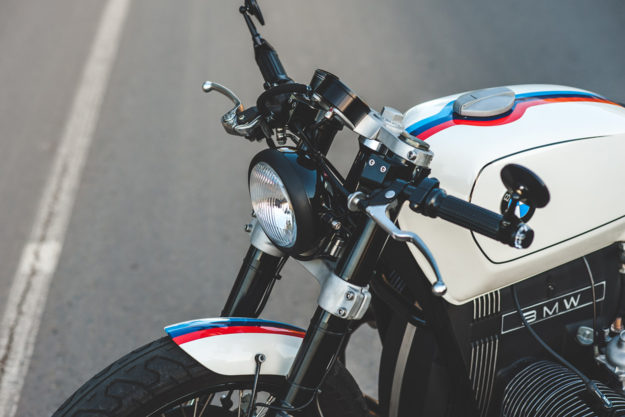
“The hexagon caps on the braces were made by turning down cap screws so that there was just enough of the hex left to use,” he explains. “They were then welded to custom-made nuts, which were attached to the rolled arms.”
This obsessive attention to detail runs rampant here. “There are no bolts that are too long—each bolt is exactly right. I even turned off the ribbing on the heads of cap screws for a cleaner look.”
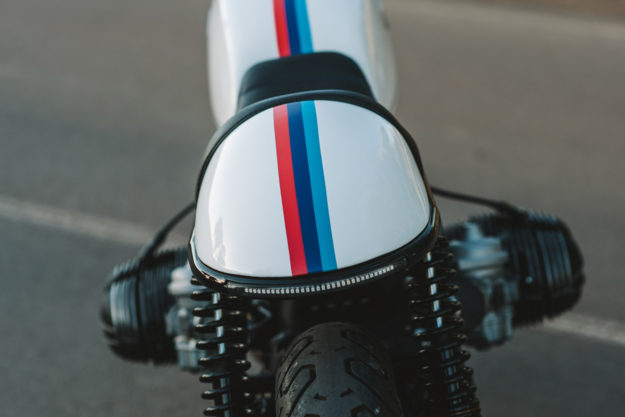
To slim the BMW down, Mark swapped the bulky R100RT fuel tank for a more svelte BMW R50/5 ‘Toaster’ tank. He then worked on a custom subframe and seat, complete with a hand-rolled aluminum bum box and an integrated LED taillight.
“This probably took the most time on the bike,” he says, “to get all the lines and proportions right. You’ll notice on many BMW cafes that if looking from the rear, the left hand shock normally sits at a slight angle, or is off center. I worked hard to get that symmetrical, by making a new lower shock mount and getting the subframe loop size just right.”
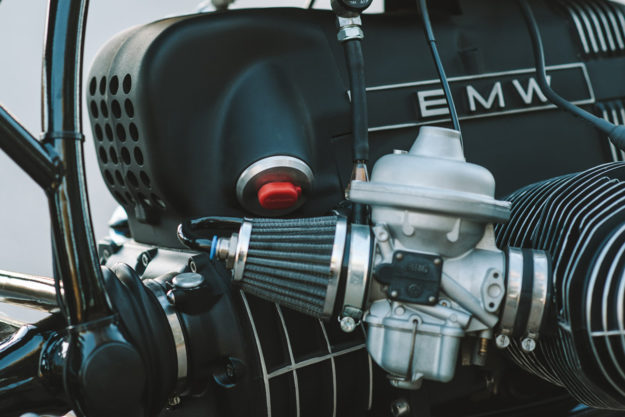
Lower down, Mark fitted a set of cone filters and repurposed the air box to house a LiPo battery. He even wired in an Optimate charge port, embedding it in the old air filter inlet. And he set up an inventive engine breather system, which vents via the cone filters using pneumatic fittings.
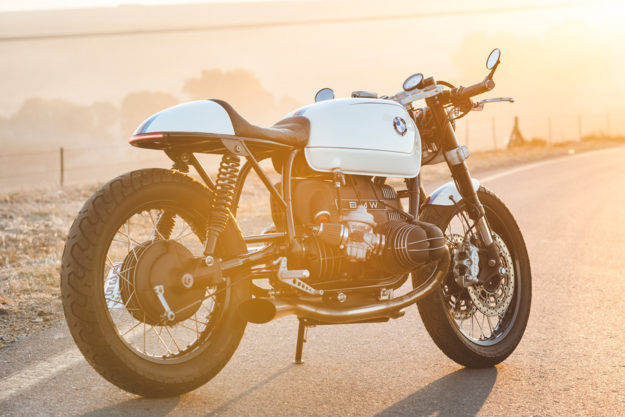
The engine itself is mostly stock, but it was rebuilt to make sure everything was still up to scratch. The carbs were rebuilt too, and given a pair of hand-made choke pulls. And in case you’re wondering, that glorious two-into-one exhaust sounds just as good as it looks.
The rear-sets are one-offs, and presented another challenge. Mark wanted to keep the rear brake control as compact as possible, but still adjustable—in case a future owner wants to adjust it.
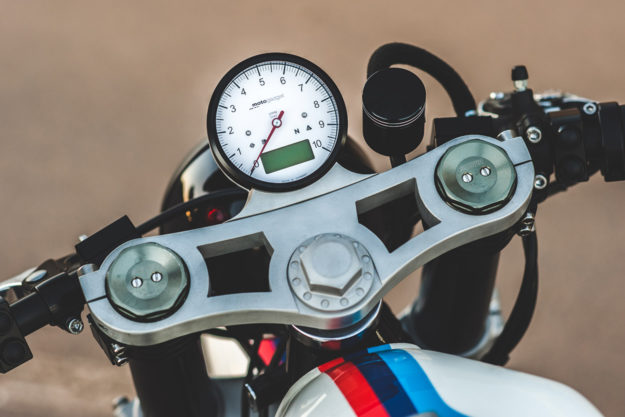
To keep things tidy, Mark rewired the bike around a Motogadget m-Unit controller. “This was the first time I ever tackled wiring,” he says. “I had to do a lot of reading and research before tackling it, but luckily the BMW charge and ignition system is pretty straight forward.”
Other Motogadget goods include the speedo, grips, bar-end mirrors and turn signals, push buttons, and m-Lock keyless ignition. Mark’s had the RFID tag sewn into his glove—so a swipe of the hand in the right place switches the bike on.
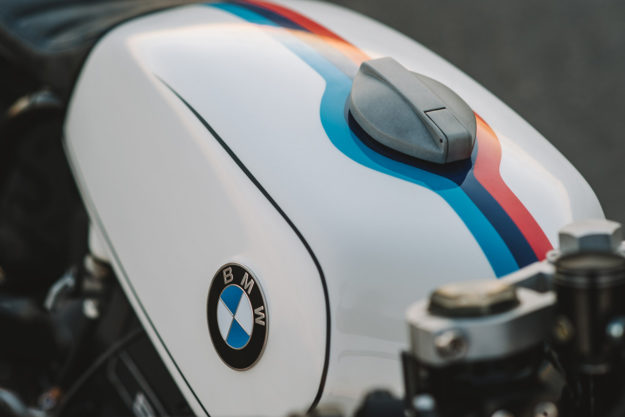
Given Mark’s love for the marque, settling on a livery was easy. The BMW’s adorned in white, with motorsport colors running over the top and flowing around the gas cap. A delicate black pinstripe finishes it off, designed to align with the bottom of the seat. The rest of the bike’s mostly black, with some tasteful contrasts worked into the motor.
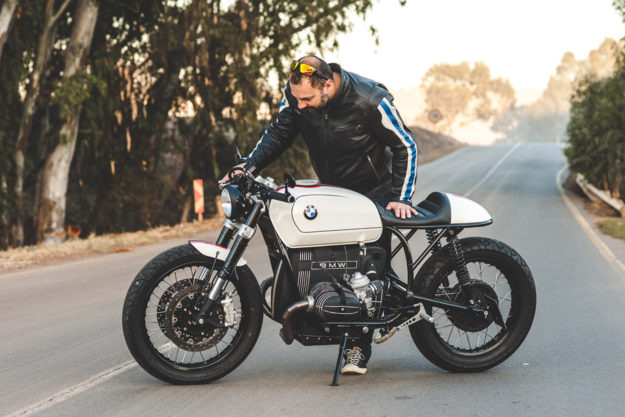
It took Mark a year to complete his R100RT, but we reckon it was time well spent. And he’s now well and truly hooked; he’s already finished kitting out his R80G/S (pictured below), and is in the process of restoring an R90S. “Then I’ll get cracking with another custom,” he says, “I’m itching to do something with a R nineT.”
Yip: obsessed.
Follow Mark on Instagram | Images by Devin Paisley
Mark would like to thank Black Silver Customs for help with the machining, FD Classic Worx for the paint, Alfin Upholsterers for the seat and Scorch for the exhaust. Plus D’ville Classics, Wille De Kock, Byrone Billings and Gerald Dixon.
